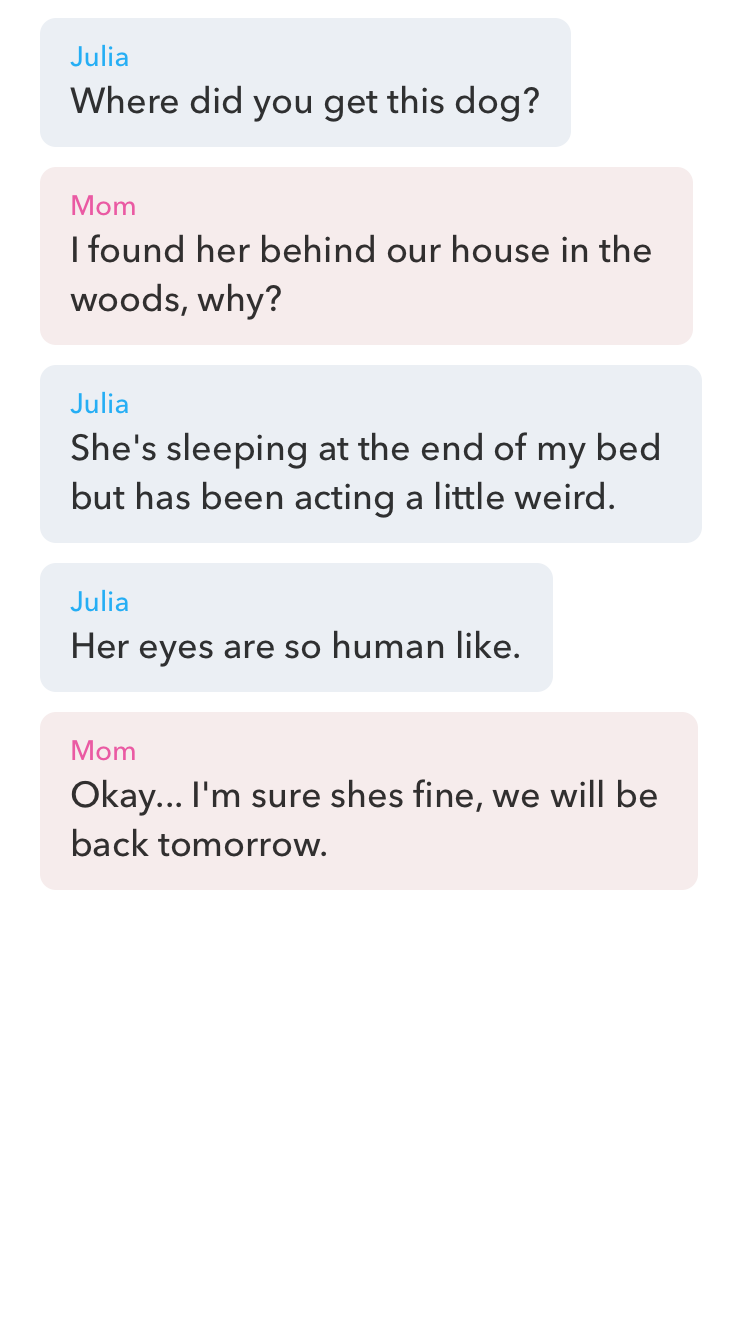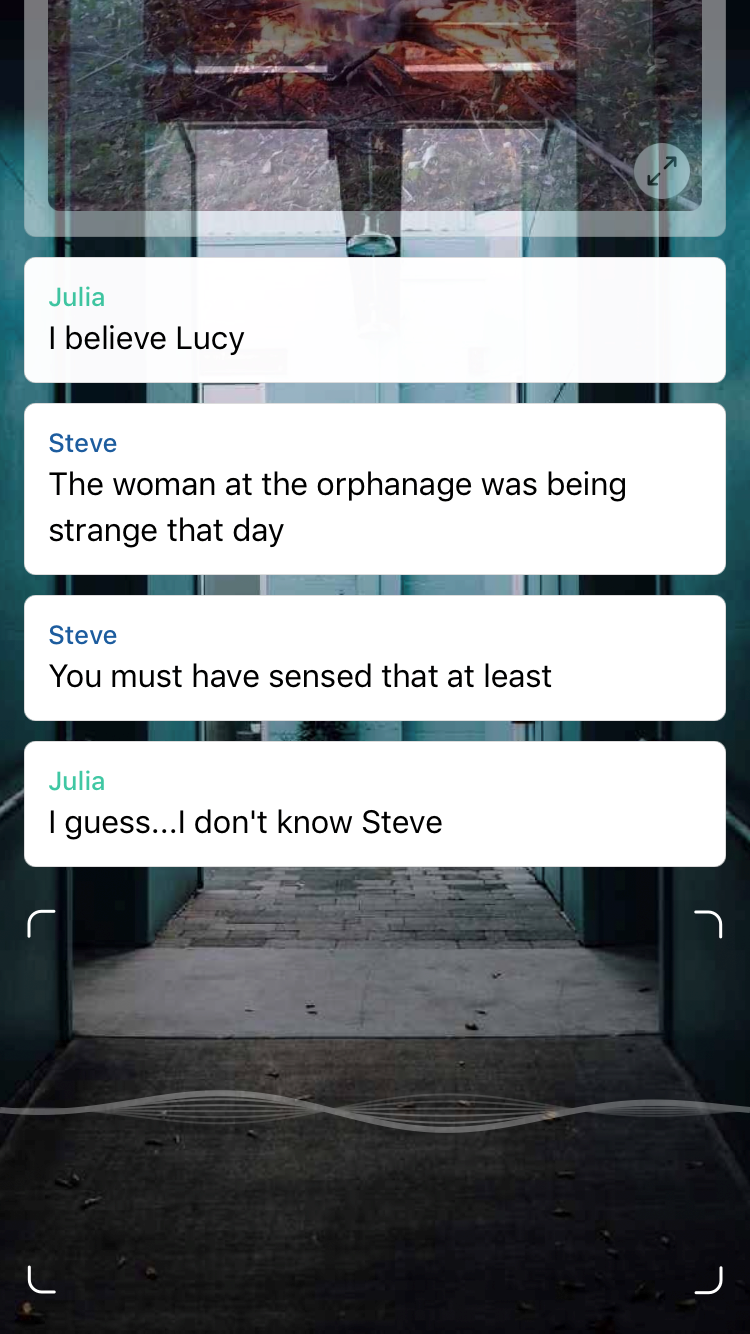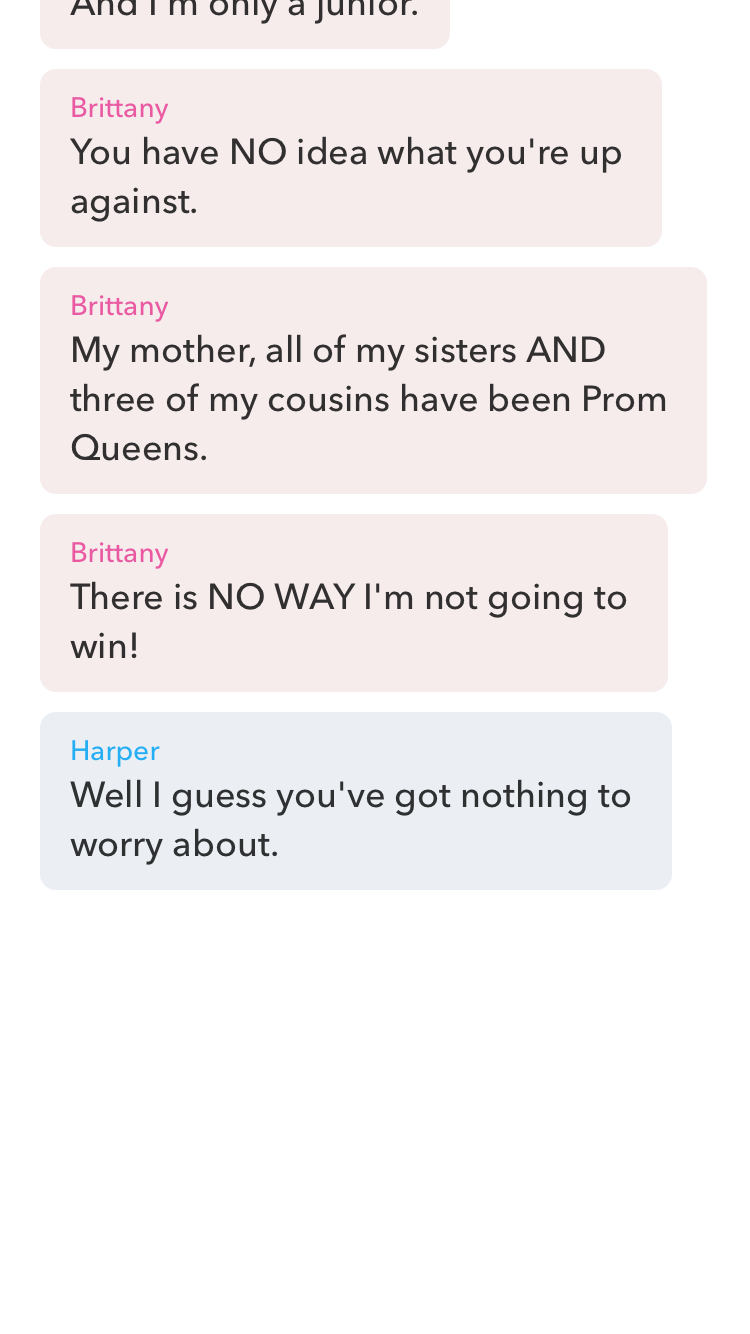The texts appear on my phone as fast as I can tap. “Where did you get this dog?” Julia asks. “Her eyes are so humanlike.” Julia’s mom is quick to reassure her. She found her behind the house in the woods, but Julia shouldn’t worry—“I’m sure shes fine.” The casual lack of punctuation makes the message seem realistic, like I’m actually viewing a conversation happening between Julia and her mother. But I’m not: This story (“Mystery Dog”) is a piece of chat fiction available through an app called Yarn, a new and increasingly popular format for writing and disseminating digital stories.
 Yarn—and similar apps, like Hooked and Tap—allow users to watch stories unfold at their own pace, one text at a time. They’re fast-paced and compelling, and, especially for a Gen Z audience who’ve grown up communicating via text message, intuitive. So much of their lives take place in online chats such as iMessage, WhatsApp, and Snapchat, that telling stories this way is a natural continuation.
Yarn—and similar apps, like Hooked and Tap—allow users to watch stories unfold at their own pace, one text at a time. They’re fast-paced and compelling, and, especially for a Gen Z audience who’ve grown up communicating via text message, intuitive. So much of their lives take place in online chats such as iMessage, WhatsApp, and Snapchat, that telling stories this way is a natural continuation.
 The popularity of these apps is evident: Hooked, which has been around the longest (since 2015) currently ranks #34 in the Apple store’s free app downloads and Yarn, which is more recent, ranks #42.
The popularity of these apps is evident: Hooked, which has been around the longest (since 2015) currently ranks #34 in the Apple store’s free app downloads and Yarn, which is more recent, ranks #42.
Tapping through the top chat fiction apps, it’s clear that horror and suspense are some of the most popular story options (I won’t tell you what the Mystery Dog turns out to be, but it’s a little gruesome). But other genres work for chat fiction as well: There’s a ton of humor, some imagined texts back and forth between celebrities, and even more serious fiction like a two-chapter selection called “Deported” in which a girl fears her undocumented mother will be taken away by immigration officials. All of it available within arm’s reach—and what’s more, sending users push notifications to tease them with the next part of the story.
 Marketer’s Use of Chat Fiction
Marketer’s Use of Chat Fiction
This degree of user engagement makes a compelling case for integration into the healthcare marketing that we do on a daily basis. But how can we use this technology to engage physicians and patients with our clients’ messages? Here are a few ideas for use cases:
- Integrate a chat-fiction widget into an interactive sales aid. In addition to hearing from a live representative, let the HCP spend a minute or two tapping through an engaging patient story, or the history and efficacy of the product.
- Create a chat fiction station at a conference booth, allowing interested doctors to read data and news in this engaging format—then collect email addresses if they’d like to hear the next chapter.
- Give patients a piece of chat fiction that tells a story about another patient’s use of the product or experience with the condition so they know what to expect—this can be done in a standalone patient app, or potentially through an existing app like the ones mentioned above
This list certainly isn’t exhaustive: There are many different ways this new method of storytelling could be used to increase engagement with healthcare promotions, incentivizing patients and doctors to tap—and keep tapping—to see how the story ends.





